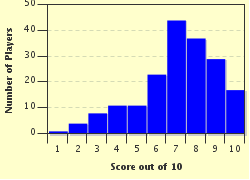Quiz Answer Key and Fun Facts
1. You have been cleared to taxi to Runway 27. What is the heading of this runway?
(The heading is the direction of the runway. Start with North being 360 degrees, 90 being East, and so on).
2. What does the term FMS stand for?
3. If Air Traffic Control requests that you are to taxi via taxiway Juliet and hold short at Runway 13, what do you do?
4. If there were a large obstacle at the end of the runway, which Vspeed would you use?
5. Lets say you have a strong crosswind while in your final approach. Which of the following is a technique that you could use to land safely and on your mark?
6. If you were an Air Traffic Control (ATC) controller, how would you pronounce this letter/number sequence: Z35976T?
7. Which of the following Boeing aircraft was most frequently used for ultra-long haul flights?
8. In the International Civic Aviation Organization alphabet, what comes after Sierra?
9. In what order should the wheels touch the ground during a landing?
10. If a large aircraft such as a Airbus A321 takes off, and then a small aircraft such as a Cessna takes off right behind it, what will most likely happen to the small aircraft?
Source: Author
cabo24
This quiz was reviewed by FunTrivia editor
stedman before going online.
Any errors found in FunTrivia content are routinely corrected through our feedback system.
